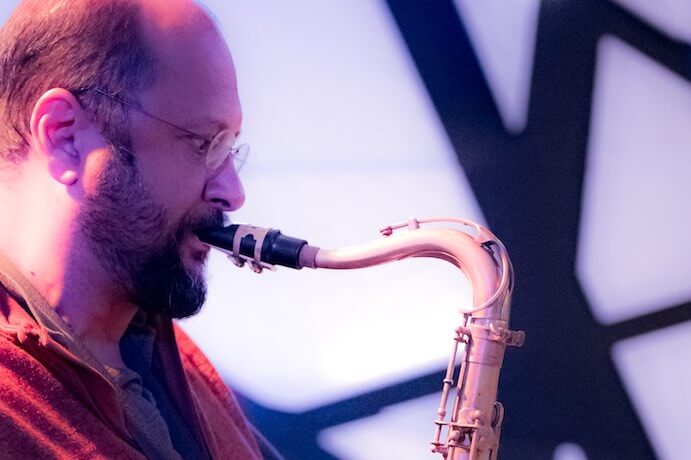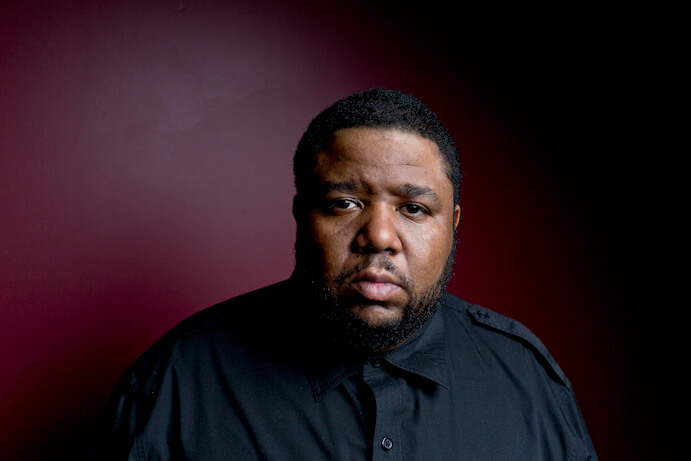Lustre is the way light interacts with the surface of a jewel. It’s ambiguous and has a wealth of intermediate types: metallic, radiant, superlative, greasy, silky, waxy, pearly. It’s what promotes a rock to jewel status. Lustre can glitter. It can appear to move when the material is rotated, and can vary widely within a particular substance. It has no rigid boundaries.
The same can be said for Facets, the latest from composer and ethnomusicologist Hafez Modirzadeh. This 2021 recording is his latest move toward “a seamless exchange” between global musical systems. Almost ten years ago, his release Post-Chromodal Out! (2012) radically transformed the piano by tuning it in “chromodality,” Modirzadeh’s integration of Western equal temperament with variations on Persian tunins. In Convergence Liberation (2014) was a suite of “post-chromodal” collaborations that permitted musical differences to co-exist without alteration. Now, Modirzadeh has refined the tension into a simple and paradoxical shape: he lowers eight piano pitches above Middle C by 38.6-65 cents, nodding to Persian koron/sori (lower/higher quarter steps), but the rest of the instrument remains tuned in equal temperament. In this unique modality, the piano has not only new tones but an altered internal resonance.

Why is Modirzadeh, a jazz saxophonist, focused on the piano? The piano and its equal temperament tuning system has dominated Western and even global musics for the past 150 years, weakening powers of pitch discrimination and bending all other collaborators to match its equal temperament tuning. “Musicians,” says Modirzadeh, “should be free to explore a variety of tonal possibilities, even on piano,” and on Facets, he invites three modern masters of improvisation (and several piano tuners) to appraise the situation.
Kris Davis and Craig Taborn are recognized as contemporary piano masters; Tyshawn Sorey is known primarily as a percussionist and composer, but all of their differences are unified by radical acceptance and curiosity. The album features eight piano solos and ten duets with piano and saxophone. There are thirteen original compositions by Modirzadeh, three tunes by or inspired by Thelonius Monk, and two improvisations, all clocking between two and eight minutes long. Each player received an identical full score in advance, but their first encounter with the retuned piano was at the recording session; each player performed the entire collection of songs, and Modirzadeh curated the final selections.
Kris Davis and Tyshawn Sorey provide two gentle rhythmic frameworks for Modirzadeh’s saxophonic nods to Persian dastgāh tones, contoured modalities of traditional Persian art music. They also bring the drama. Throughout his tracks, Sorey utilizes registral extremes and rhythmic variety to create iridescent harmonic beats, sputtering rhythmic dialogue, and amber polarities. Kris Davis leaves no possibility unexamined in four virtuosic solos that alternate casual struts, ferocious chords, and exquisite manipulation of the piano’s new resonance. Both illumine the new shades available outside equal temperament. Fast, highly rhythmic patterns on “Facet 27 Light” and “Facet Sorey” don’t sound as bright as expected; arpeggios sound less like the pointy neon of a halal cart and more like vodka drops inside a deep white freezer. The intensity is real but more pale.

Sometimes the extended techniques, altered intervals, and close recording of Modirzadeh’s key buttons make his instrument sound unlike a saxophone, perhaps like a recorder, if a recorder wears moonboots. When paired with a beating piano and disjunct unpedaled melodies, “Facet 28 Nora” and “Facet 29 Night” sound like another planet. But the next track, “Facet 34 Defracted,” gives us the opposite effect: the “out-of-tune” Monk variations evoke the most human piano scenarios: a forgotten piano finally touched, or when the worn treasure of an elderly loved one is played. Craig Taborn’s album opener “Facet Taborn” creates a similar sunrise atmosphere, but the spare solo showcases the pedalling, overtone, and beating possibilities that he deploys to subtle effect on the rest of his tracks. He and Modirzadeh luxuriate in unhurried interaction throughout all of their duets.
For music so powered by theory, Facets is wonderfully open and relaxed. What exactly are we admiring from different angles? Maybe the piano, striking new sonic poses in a rich array of formal and technical approaches. Maybe Modirzadeh’s unique scholarship and humanistic vision. Maybe the auras created in new modality, or the triune interpretations of original and classic works. Ultimately, it is equal temperament itself that Modirzadeh is able to both crystallize and expand. His setting shows its shape, its dazzle when it catches the light, and its hard limitations. Facets is no merely deconstructive offering but a shimmering liberation.
I CARE IF YOU LISTEN is an editorially-independent program of the American Composers Forum, funded with generous donor and institutional support. Opinions expressed are solely those of the author and may not represent the views of ICIYL or ACF.
A gift to ACF helps support the work of ICIYL. For more on ACF, visit the “At ACF” section or composersforum.org.
























